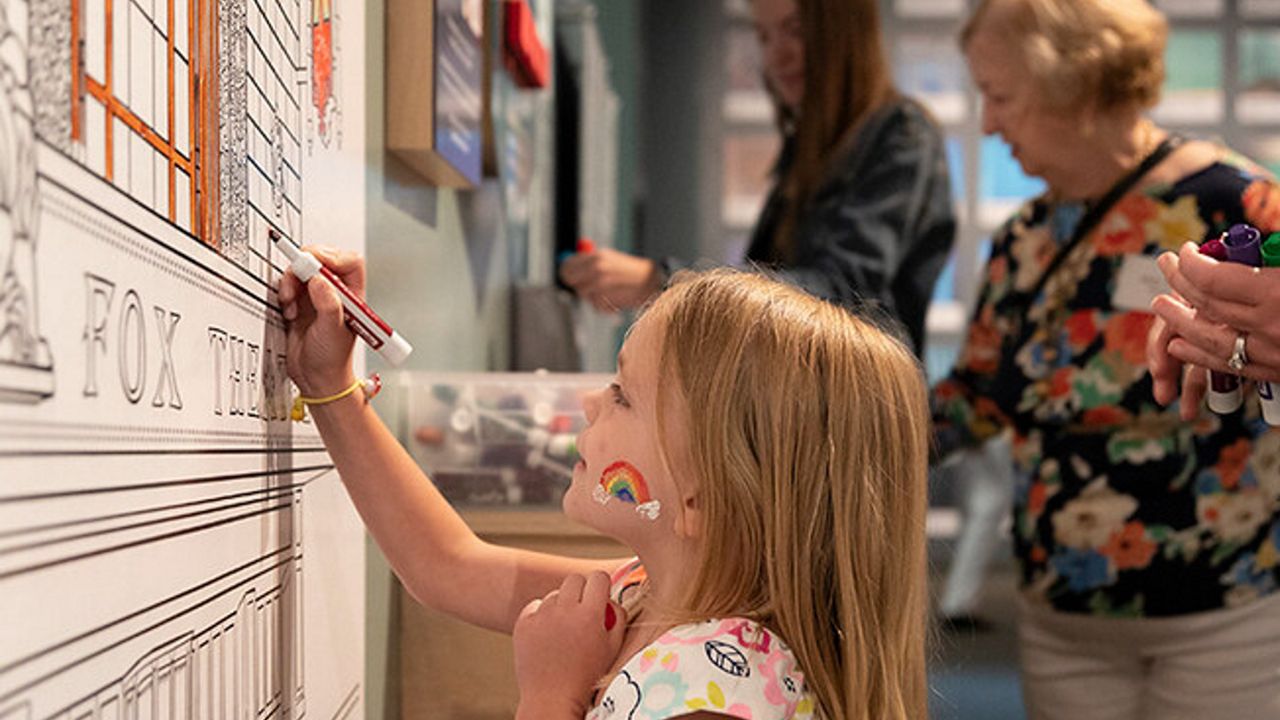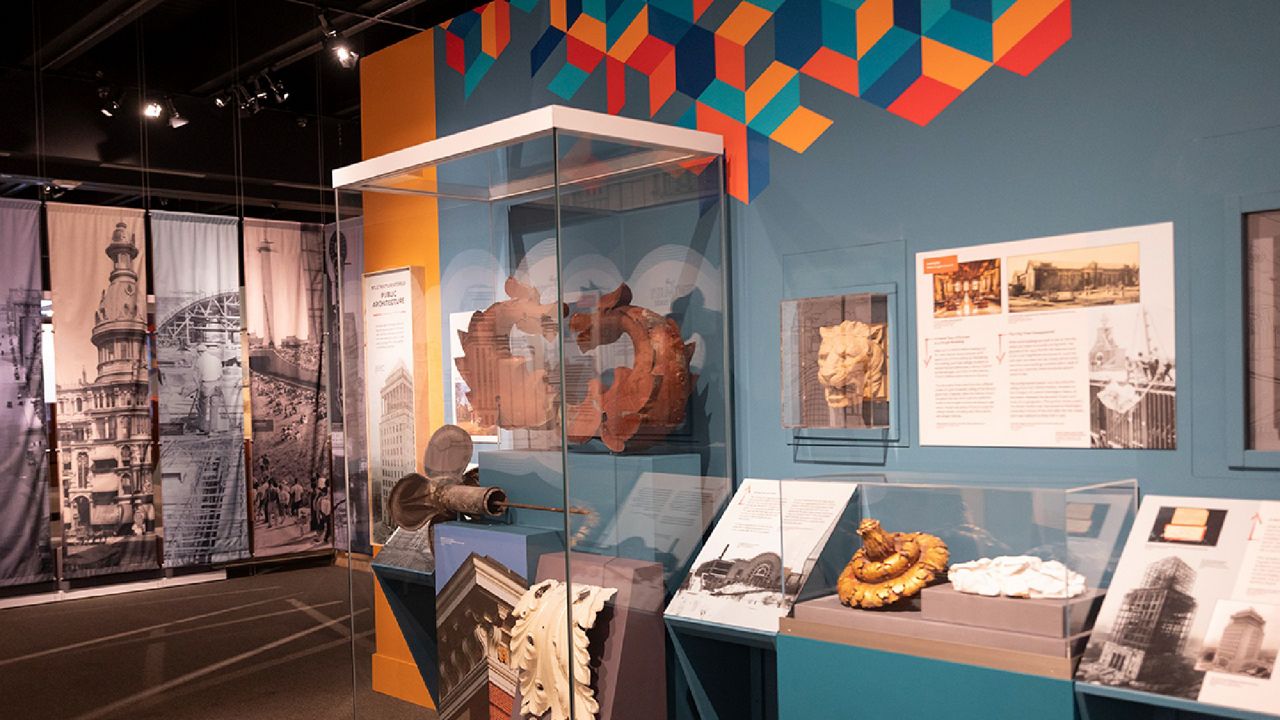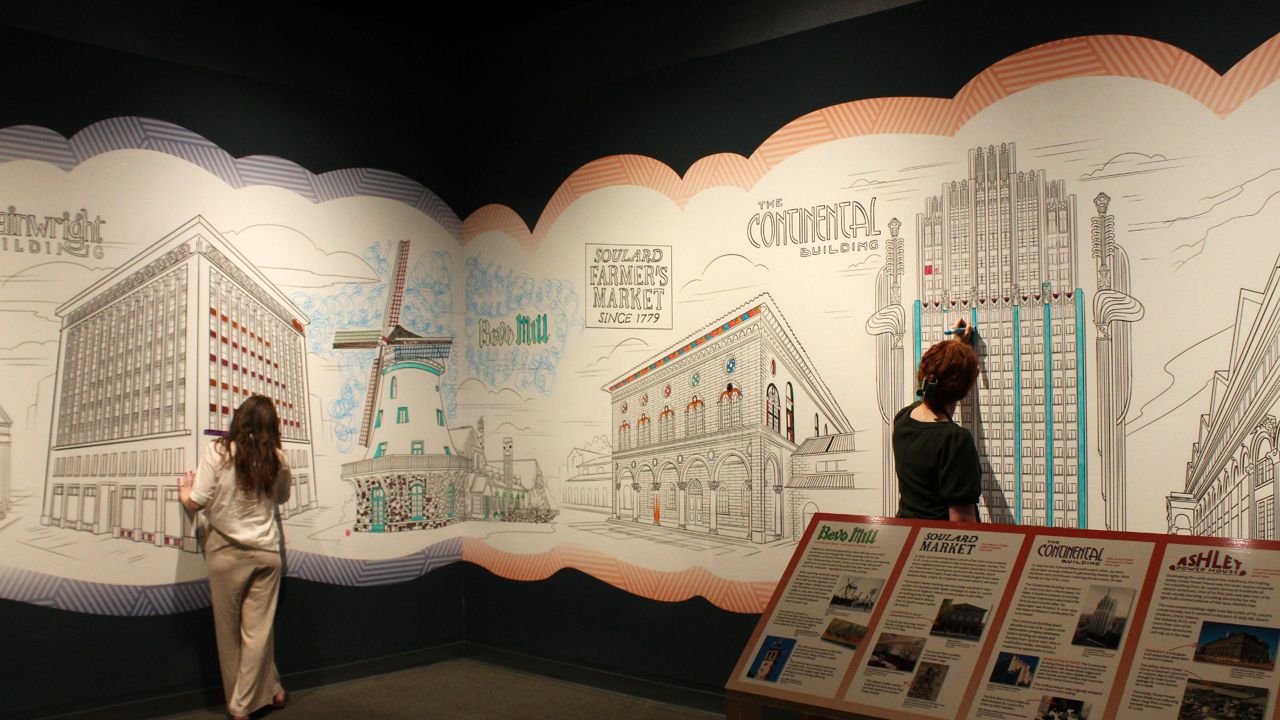ST. LOUIS — Starting Saturday, visitors will be able to color on the walls at the Missouri History Museum as part of a new exhibit, Coloring STL.
The 6,000-square-foot architectural exhibit features 50 local structures outlined on the walls where guests can color them using dry erase markers.

While coloring city buildings, iconic landmarks and neighborhoods, they also can read short facts about them, as well as view more than 50 artifacts from those structures, according to public historian and content lead Andrew Wanko.
“The idea is that we just turn people loose to color on the walls, let their imaginations run wild, and the hope is that even though it’s a fun and whimsical thing on the surface that in the process of that, they end having conversations with the people they’re with,” he said.
“It’s my dream that lifelong St. Louis residents will end up sparking conversations with people who just moved here because they’re coloring a building right next to each other. Those sorts of conversations and deeper connections to the community are things that we could never write on an exhibit label.”
Included in the exhibit is a timeline of residential buildings ranging from circa 1700 Illinois Longhouses, the French Second Empire Townhomes popular in Lafayette Square, the circa 1890 urban row houses found in Soulard, Old North, Hyde Park and Benton Park, the shotgun-style homes of found on the Hill, and suburb homes.
“Another thing we want people to leave with is the thought that St. Louis’ architectural heritage isn’t just the big, enormous landmark structures,” Wanko said.
“Your own house has just as many fascinating, historic stories, and other stories of social constraints, and technological advances and all of these different things even in the walls of your own home.”

Other interactive elements include trivia flip panels to test people’s architectural knowledge and real St. Louis building materials that visitors can touch, including bricks, an iron “tie star” and a granite paver once used to pave St. Louis city streets.
“St. Louis was one of the largest brick manufacturing centers in the world in the late 1800s, and we have examples of real bricks that were made right here in the city,” Wanko said.
There also is a picture slideshow titled “Yesterday’s St. Louis” that shows 50 images “that offer up incredible views of St. Louis’ past, with some streetscapes looking very familiar and others looking totally unrecognizable.”
Coloring STL “is really about getting people to take a deeper look at the city that surrounds them and maybe notice details that they’ve driven past 100 times, but never slowed down enough to see,” Wanko said.
The Missouri Historical Society Press has published a coloring book written by Wanko and illustrated by Rori, a local illustrator and cartoonist. The book features more than 30 colorable St. Louis structures along with information about them.
Weekend activities for the opening of Coloring STL are happening through Sunday.
The new exhibit will run through May 2024.
For more information, click here.



